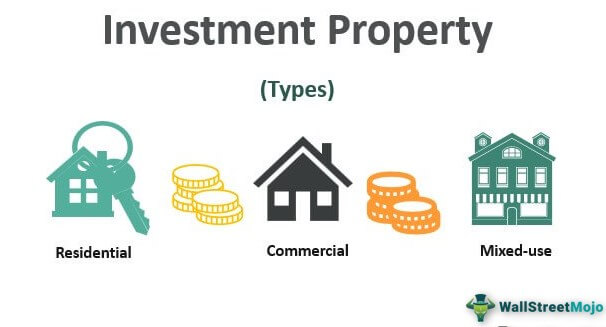Rendering Perth is the process of producing a final image or animation using computer software. This can be for a variety of purposes including architectural design, engineering, simulations, and video games.
For graphical applications, rendering involves an interplay of pixel order and object order algorithms. Pixel-order algorithms iterate over pixels, while object order iterates over primitives in a scene.

Rendering is the process of generating a 2D or 3D image from a model in a virtual scene. This model contains geometry, viewpoint, texture, lighting, and shading information. The rendering program then converts this model into a bitmap or other image. The result is a virtual scene that can be viewed by the user via a video display or a computer monitor. Rendering is an important part of computer graphics because it allows for the simulation of realistic images. The goal is to create an image that accurately portrays the real-world. However, current computer displays and human perception have limitations that require certain short-cuts to be made in order to achieve an acceptable level of realism.
There are a number of different algorithms for rendering. In general, these methods seek a trade-off between speed and realism. More advanced techniques become practical as computing power and memory capacity increase. A major distinction is between pixel-by-pixel (image order) algorithms and primitive-by-primitive (object order) algorithms. Pixel-by-pixel methods tend to be faster, but may miss subtle details. Primitive-by-primitive methods are slower, but may be more accurate for complex scenes.
GameObjects are represented in the Unity game engine by a class called Render Object. Each object has a parent that defines its position and size in the scene, and it has children that are rendered based on the parent’s information. Render Objects can have several attributes that are used for rendering, such as render order and depth.
In addition to its base position and size, a Render Object can be used to specify an object that should appear behind it. This is important when the character needs to be drawn in front of other GameObjects. To do this, you need to create a Renderer Feature that is named DrawCharacterBehindObjects. Then, add this Renderer Feature to the GameObject that you want to draw behind other objects.
Render Objects can be composited into layers, and this has some implications for how graphical operations are implemented. For example, clipping is implemented differently depending on whether the object and its descendants are in a layer or not.
Lighting in a scene can make it look dull and lifeless or bright and vibrant. It is also the foundation for all other elements in a render. Lighting can be achieved by using a combination of various lighting techniques, including global- or indirect illumination, reflections and caustics. Different rendering programs use different models for light interaction, some are more advanced than others.
Rendering is the process of converting a 3D model into a 2D image, based on the position of the camera and the position of all the lights in the scene. Unlike photography, computer rendering doesn’t capture the entire scene at once; instead, it’s broken down into a series of separate passes that are rendered and then combined into a final image using post-processing software like Photoshop.
There are many different kinds of lights, including directional, spot, area and HDRI lights. Each type of light can cast different kinds of shadows, and combining several types of lights in a scene creates more realistic results. Directional and spot lights typically cast sharper, more defined shadows, while area and HDRI lights produce softer, more diffuse shadows.
Color rendering is another important aspect of lighting a scene. It determines how well an object appears to the human eye and how true or false it is to its actual color. For example, a cool light source with a high CRI (Candleholder Intensity Rating) will render colors more accurately than a warm one with a lower CRI rating.
Indirect lighting in rendering is the light that bounces off surfaces and illuminates other objects or parts of a scene. It’s important to have a good mix of both direct and indirect lighting in your scenes, as it’s the best way to achieve true realism.
Indirect lighting is also referred to as Ambient Light, and it’s often the first step in creating a convincingly realistic render. You can set the time of day, add sunlight for a more dramatic effect or even use a single soft, overhead light to create a natural, indoor lighting style. Then, you can use a variety of shading techniques to achieve the effect you want.
Figuring out the best camera angle is an essential step in creating a 3D rendering. The angle, also called perspective, will affect the way a viewer perceives the subject and can influence their emotions. In addition, the angle can change how light hits a scene and creates shadows and lines of contrast.
A few common camera angles include the eye-level view, corner view, close-up, and panoramic view. These different perspectives can highlight unique elements of a design or building, capture the surrounding environment, or create a sense of ambiance and scale. When choosing a camera angle, it is important to consider the focal length, lens type, and spatial atmosphere. A lens with a longer focal length is more likely to distort the subject, while a shorter one can be more effective in close-ups.
Eye-level views are commonly used for interior architectural renderings, and they work well with wide-angle lenses to show a larger area. They can be especially helpful for highlighting design details that would be difficult to see from a straight-on angle. Corner views are similar to eye-level shots but allow you to capture two walls of a room at once, which is especially useful for showcasing window and door designs. These angles are good for showcasing unique architectural features and catching the audience’s attention.
Close-ups are great for highlighting specific details in a design or building, and they can convey a sense of luxury or evoke emotion by emphasizing the beauty of an object. However, they aren’t as effective when used alone and should be paired with other angles to provide a complete picture of the design or building.
Panoramas, or bird’s eye views, are often used for exterior renderings and give a general overview of a building or landscape. This angle is great for establishing a location in your rendering or capturing the entire scope of an architectural project.
Upshot angles can be used to make a product look large and powerful, which is particularly effective when marketing certain products that need to convey strength and durability. When used in conjunction with the right lighting and background, upshot angles can be a powerful tool for enticing your audience to take a closer look.
Perspective is a technique for depicting three-dimensional volumes and spatial relationships on a two-dimensional plane as if seen from an observer’s point of view. It is a fundamental skill for architects, and is often used to generate “realistic” images of buildings in order to help people understand how they will look on the inside, from the outside or within their context.
The first step in creating a perspectival drawing is to determine the viewing angle and establish the horizon line. Then the vanishing points, which are imaginary lines that define the convergence of all the horizontal lines in the drawing, must be determined. Then, based on the number of vanishing points, the type of perspective can be chosen.
Single-point perspective is the simplest form of perspective, and it is most often used for interior views or to create trompe l’oeil (fool the eye) effects. All of the horizontal lines in a single-point perspective drawing converge to one vanishing point, which is at the horizon line. All of the vertical lines that run up and down the drawing diminish toward this vanishing point as well.
Two-point perspective is a slightly more complex form of perspective, and it is the most common form of perspective used to render building facades. It is similar to one-point perspective, but it has two vanishing points, one on each side of the image. All of the horizontal and vertical lines in a two-point perspective drawing must diminish toward one of the vanishing points, and all of the diagonal lines must also disappear from one vanishing point to the other.
The most important aspect of perspective is that objects appear smaller the further they are from the observer. This is known as foreshortening, and it is the most significant effect of perspective.
The use of perspective in architectural rendering is a complicated matter, and finding the right angles and proportions can be a challenge. However, it is possible to achieve good results with some effort. Architects who learn to construct perspectives in college or high school drafting often find it easy to apply the principles to their architectural work. For those who struggle with the construction of perspectives, the new tools and features available in most architectural software programs should make constructing perspectives a lot easier.






 Testing for water contaminants is usually done using laboratory methods. Lab testing can provide accurate results, but it takes time. For quicker tests, home kits are often used.
Testing for water contaminants is usually done using laboratory methods. Lab testing can provide accurate results, but it takes time. For quicker tests, home kits are often used.
